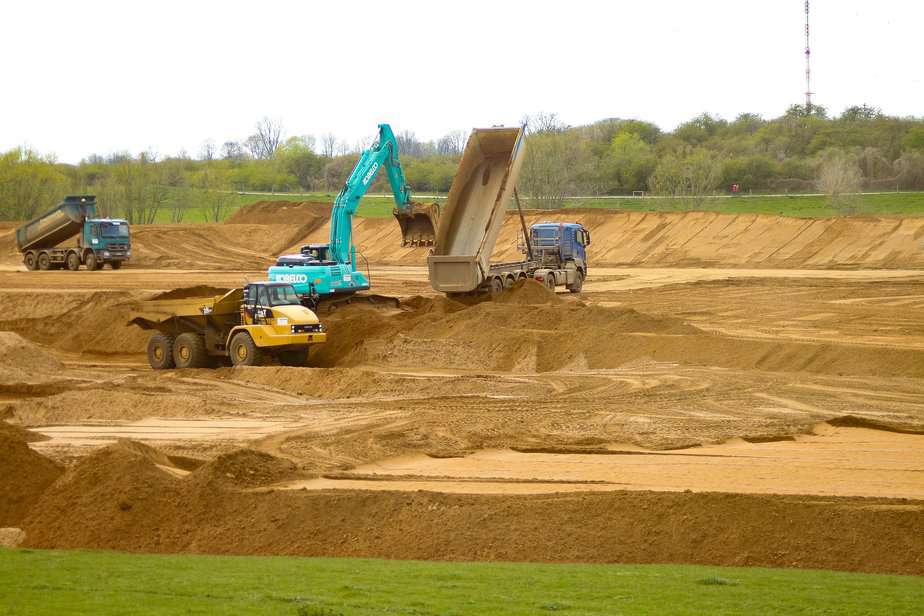
Earth dams are versatile structures that serve a multifaceted role in flood control and disaster management.
Floods are one of the most devastating natural disasters that can wreak havoc on communities, causing immense damage to property, infrastructure, and, most tragically, human lives. The frequency and intensity of flooding occurrences have risen due to climate change and urbanisation, making it imperative for us to explore and employ effective flood control and disaster management strategies.
Among the various flood control measures, earth dams have emerged as vital structures that play a crucial role in mitigating the impact of floods and managing disaster situations. In this thesis, we will dive deep into the significance of earth dams in flood control and disaster management, exploring their functions, benefits, and their role in safeguarding communities.
Understanding Earth Dams
Earth dams, often referred to as embankment dams, are human-made structures constructed primarily of soil, rocks, clay, and sometimes concrete. These dams are designed to impound water, creating reservoirs or ponds to store water for various purposes, including irrigation, water supply, and hydroelectric power generation. However, one of their lesser-known yet critical functions is flood control and disaster management.
The Multi-Faceted Role of Earth Dams
Flood Control and Regulation
Earth dams are designed to control and regulate the flow of water in river systems. During heavy rainfall or snowmelt, rivers can swell rapidly, causing downstream flooding. Earth dams effectively store excess water, gradually releasing it downstream at a controlled rate. This controlled release helps in reducing the peak flow downstream, thereby preventing or minimizing flood damage to vulnerable communities, farmland, and infrastructure.
Emergency Water Storage
Earth dams can serve as emergency water storage reservoirs during flood events. When a flood is anticipated, authorities can intentionally lower the water level in the dam’s reservoir to create storage capacity. This additional storage capacity can then be used to temporarily store excess floodwater, thereby reducing the intensity of downstream flooding. Once the flood threat diminishes, the stored water can be gradually released, allowing the river to return to its normal flow.
Sediment Control
Rivers often carry sediment and debris downstream during floods. This sediment can clog waterways, degrade water quality, and exacerbate flooding. Earth dams are equipped with sedimentation basins or traps that capture and retain sediment carried by floodwaters. By doing so, they help maintain the long-term effectiveness of downstream water bodies and ecosystems.
Habitat Restoration
Many earth dams are equipped with fish ladders and other features designed to support aquatic life. When properly managed, these dams can actually enhance the local ecosystem by creating diverse habitats for aquatic species. This balance between flood control and ecological conservation is an essential aspect of responsible dam management.
Benefits of Earth Dams in Disaster Management
Flood Risk Reduction
The primary benefit of earth dams in disaster management is the reduction of flood risk. By regulating river flows and storing excess water, these structures can significantly lower the likelihood of catastrophic flooding. This protection is particularly crucial for communities located in flood-prone areas.
Water Resource Management
Earth dams play a pivotal role in managing water resources. By storing water during non-flood periods, these structures ensure a consistent water supply for agriculture, industry, and municipal use. This water management aspect also helps reduce the risk of drought-related disasters by providing a buffer during dry spells.
Hydroelectric Power Generation
Many earth dams serve a dual purpose by generating hydroelectric power. By guaranteeing a steady power supply in an emergency, this renewable energy source not only lowers greenhouse gas emissions but also aids in disaster management. In the event of a major weather event, having a reliable source of electricity is crucial for communication, medical facilities, and emergency services.
Recreational Opportunities
Earth dams with reservoirs often offer recreational opportunities such as boating, fishing, and wildlife viewing. These recreational areas can serve as evacuation centers or staging areas during disasters, providing essential facilities for affected communities.
Challenges and Considerations
While earth dams are instrumental in flood control and disaster management, they are not without challenges and considerations. Some of the key points to keep in mind include:
Maintenance and Safety
Proper maintenance of earth dams is essential to ensure their continued effectiveness and safety. Neglected dams can pose a significant risk if they fail during a flood event. Regular inspections, repairs, and upgrades are crucial to their reliability.
Environmental Impact
The construction and operation of earth dams can have environmental impacts. Appropriate mitigation measures must be in place to minimize harm to ecosystems and aquatic habitats.
Community Engagement
Communities located downstream of earth dams must be engaged in the planning and management processes. Effective communication and early warning systems are vital to ensure that residents are informed and can take appropriate actions during flood events.
Conclusion
By effectively regulating river flows, storing excess water, and providing a range of additional benefits, these dams play a pivotal role in safeguarding communities and ecosystems from the devastating impacts of floods. However, their construction, operation, and maintenance require careful planning, environmental consideration, and community engagement.
As we continue to deal with climate change and increasing urbanization, earth dams remain a vital component of our efforts to manage and mitigate flood-related disasters effectively.
More reading
Decoding Polymer Innovations’ Advertising Strategies for Water$ave

Pingback: Farm Dam Seepage Control: Techniques And Best Practices | Big Ditch Dam Building Company
Pingback: Farm Dam Maintenance: Essential Practices For Longevity | Big Ditch Dam Building Company
Pingback: The 10 Worst Dam Disasters In History | Big Ditch Dam Building Company
Pingback: Farm Dams May Be Carbon Sinks, Rather Than Emitters | Big Ditch Dam Building Company
Pingback: How Dams Reduce The Impact Of Floods And Fires | Big Ditch Dam Building Company
Pingback: Innovations In Spillway Design For Dams: Ensuring Safety And Efficiency | Big Ditch Dam Building Company